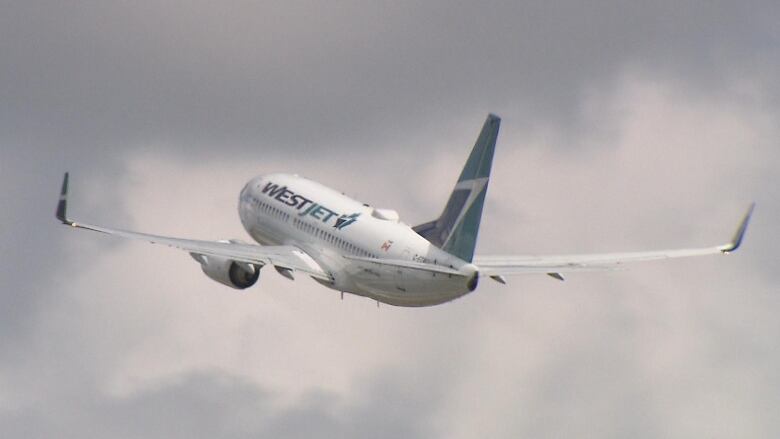After 2 hard years, Alberta's major airports now seeing return of passengers, employees
Edmonton, Calgary airport authorities still rehiring after layoffs early in pandemic

Alberta's two major airports are seeing passengers return but for years to come will continue to feel impacts of the COVID-19 pandemic.
Canadian airports were hard hit by the pandemic. People hunkering down at home alongside travel restrictions meant passenger traffic dried up, with flight centres often responding by cutting down on costs and employees.
In Alberta, the international airports serving Edmonton and Calgary are starting to see passengers return but full recovery to their former status is still some ways off.
"Things are recovering, and people are starting to travel again," said Steve Maybee, vice-president operations, infrastructure and communications at Edmonton International Airport (YEG).
"So it's much better and much more positive."
Employment is also climbing steadily after massive layoffs during COVID-19.
Before the pandemic hit, the airport employed around 300 workers, Maybee said. About 30 per cent were laid off, he said.
"We have hired some of those folks back," he said, adding that the airport authority is taking a phased approach to hiring as it builds up again.
Service employees are also returning as restaurants and other airport businesses reopen.
A recent decision from the Alberta Labour Relations Board indicates that all 138 workers of one service employer with multiple outlets at the Edmonton airport were laid off in 2020.
Maybee said staffing remains an issue as people left aviation, which for years was secure without the ups and downs of other industries. He said there are now more inexperienced people in frontline jobs, learning as best they can.
But it does slow some processing, he said.
"As theindustry recovers, passengers will come back faster than some of the efficiencies that we can put in place."
The Edmonton and Calgary airports are both turning to technology to help smooth things out, recently implementing apps for virtual queuing in security lines.
Rob Palmer, vice-president commercial and chief financial officer at the Calgary Airport Authority, said the airport laid off about one-third of its nearly 300 employees in 2020. He said there is still probably about 15 per cent less of the workforce in place than there was in 2019.
Sections of both theEdmonton and Calgary airports were closed during the lows of the pandemic. Palmer said on the retail side around 100 locations are open now in Calgary, still fewer than before thepandemic.
"Some of the locations just never came back," he said, adding that others were consolidated with plans for future reopenings.
Bottom line
Both Edmonton and Calgary airports have been millions of dollars in the red in the previous two years. A boost in cargo shipments as many Albertans took to online ordering offered some respite.
Last year, YEG had a 13 per cent increase over pre-pandemic baselines while YYC had double-digit growth in landings and revenue.
But even with passenger flight numbers improving in the latter half of 2022, neither airport is expecting to reach the black.
"We won't be turning a profit," Palmer said. "We will be losing money this year."
He said increasing costs and inflation are putting additional pressure on the bottom line. Debt accrued during the pandemic is also likely to play a part.
Nonetheless, executives are optimistic.
"We're hoping we've turned a corner and we're back to that growth that we had pre-pandemic," Palmer said.
Fort McMurraystill working at recovery
Recovery has typically been slower for smaller airports. Denean Robinson, interim CEO of the Fort McMurray Airport Authority, said the pandemic hit differently than for larger centres.
"Whether you have one flight coming in or 10 flights coming in, you still have to clear the runway and have the operations column," Robinson said. Fort McMurray International Airport only has one arrivals and departures and maintained its small team of around 30 employees.
"So until we hit that critical mass, we will continue to have a deficit position on an annual basis."
Before the pandemic, the airport was seeing around 18 to 20 flights a day it's now down to about seven. But Robinson said it's working to bring more flights back. A direct service to Tucson, Ariz.,starts on Nov. 30.
"Some of the other airports in Canada, we're seeing projections of being back to 90 to 95 per cent next year, and we're only forecasting to be about 60 cent," Robinson said.
"So we still have a ways to go in our recovery."












_(720p).jpg)


 OFFICIAL HD MUSIC VIDEO.jpg)
.jpg)



























































































